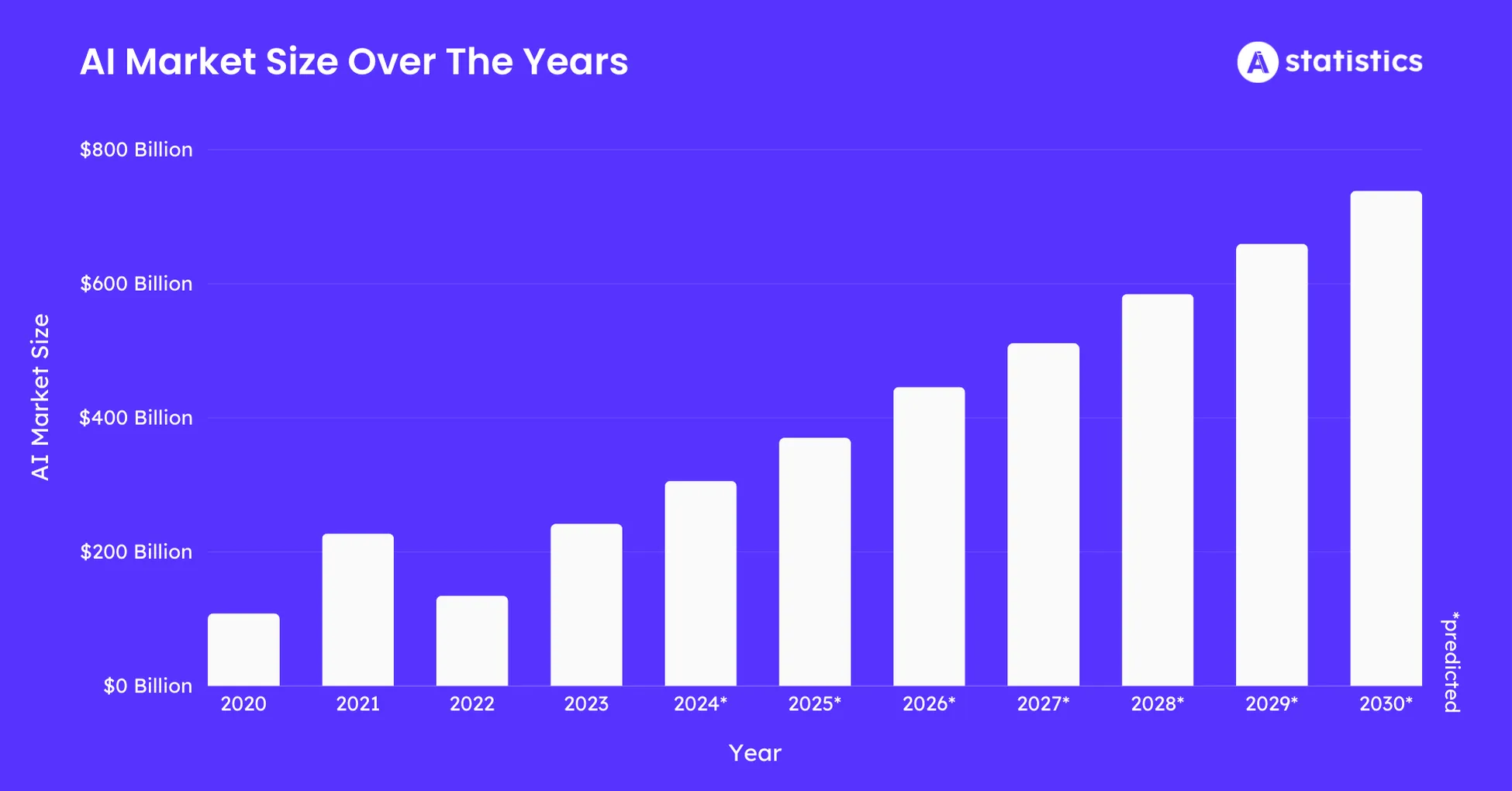Real value or other meta

The decentralized AI sector will see unprecedented growth in 2024. According to Pitchbook, investors have poured $436 million into the field, a nearly 200% increase over 2023.
This increase coincides with the impressive market value of the global AI market, which reached $214 billion this year. The convergence of AI and blockchain is shaping how these technologies are developed, accessed and deployed. But is decentralized AI more than a speculative trend?
Breaking down decentralized AI
Decentralized AI integrates artificial intelligence into systems that prioritize distributed ownership, management, and collaboration. Unlike traditional AI models, which are often centralized, decentralized AI is driven by trustless frameworks.
Investors are jumping on the trend like never before, with decentralized AI startups raising more revenue this year than in the past three years.
Projects like SingularityNET exemplify this model by enabling the creation, sharing and monetization of AI services. In March 2024, SingularityNET, Fetch.ai and Ocean Protocol announced plans to merge their tokens.
This integration aims to advance collaborative AI initiatives and democratize access to these technologies. These frameworks help to reduce dependence on centralized institutions, paving the way for open and fair AI ecosystems.
The rise of decentralized AI is driven by its potential to address privacy and ownership concerns. These agents can manage wallets, perform transactions, and personalize content while protecting user data.
“Crypto users are big on owning their assets and data, so decentralized AI is a perfect fit by enabling AI agents that work directly for each user. What's even more exciting is that in crypto, ownership of these AI agents can be shared. A DAO can use the AI to manage the treasury or a team to generate unique NFTs.” Imagine an AI artist in partnership with AI's transparency and It is in combination with equity,” said Jawad Ashraf, CEO of Vanar, in an interview with BeInCrypto.
Another key driver is blockchain and AI. Blockchain provides secure data storage, AI processes data and generates insights. The appeal of community-driven innovation and co-ownership will further increase adoption.
Challenges and threats in DeAI
Despite its promise, decentralized AI faces significant challenges. As blockchain's current infrastructure struggles to efficiently handle the resource-intensive needs of AI, scale remains a technical hurdle.
Trust and governance also pose challenges. Transparency and accountability mechanisms are critical to fostering this trust.
“Scaling large datasets and models across decentralized networks is a big hurdle,” said Chi Zhang, CEO of Kit AI, in an interview with BeinCrypto.
The issue of data privacy further complicates adoption. A recent survey by Informatica found that 40% of data leaders identified data privacy and security as the biggest challenges to adopting generative AI. Structures must address these issues to gain widespread user trust.
“Conceptually, one of the hardest issues is trust. Decentralized AI requires people to trust not just the AI, but the entire network that runs it, which means frameworks need clear and transparent mechanisms for accountability and decision-making,” Ashraf explains.
Decentralized AI must demonstrate the utility to move beyond retail-driven speculation. For example, privacy-preserving AI can securely analyze sensitive medical data without centralizing it.
Financial markets present another practical use case. Mark Stokic, Head of AI at Oasis Protocol, emphasizes the role of privacy-enabled AI agents in generating trading signals. These agents protect sensitive information while contributing to collective intelligence. The key, he says, is to build something that's still relevant after the hype dies down.
Moving forward
Forbes forecasts that the global AI market will reach $1,339 billion by 2030, an impressive growth from $214 billion this year. This development highlights the opportunity for decentralized systems to scale with traditional AI.
Stoic predicts technologies that will power smart cities, financial instruments and collaborative networks. These use cases can transform industries by prioritizing privacy, efficiency and user ownership.
“This is not just a theory. We are seeing real applications where decentralized networks are providing computing power that is otherwise unattainable. Also, we finally have some attention outside of the crypto world. We are seeing AI PhDs as founders of crypto companies. These aren't just crypto natives trying to jump on the AI bandwagon, they're AI experts who recognize blockchain's potential to solve fundamental problems in the field,” Stokic said in an interview with BeinCrypto.
To realize its potential, decentralized AI must prioritize real-world applications and sustainable infrastructure. Projects like OG Labs and Warden Protocol are paving the way, showing what can happen when the utility is scaled up.
“Decentralized AI should prioritize equitable development by modeling data and contributions to encourage broad participation while reducing reliance on centralized actors. Real-world use cases such as DeFi strategy implementation, decentralized supply chain management, and privacy-preserving healthcare investigations can demonstrate its practical use. Warden Protocol CEO David Pinger said in an interview with BeinCrypto In turn, developing interoperable frameworks that enable seamless AI operations across multiple blockchains is essential to foster scalability and widespread adoption.
Decentralized AI is at a critical juncture. Its rapid growth and promising performance must contend with significant challenges. It represents both a speculative trend and a transformative technology.

Growth is driven by privacy, transparency and collaborative innovation. The real challenge for this sector is whether it can deliver practical and flexible applications.
Disclaimer
Following Trust Project guidelines, this feature article presents opinions and perspectives from industry experts or individuals. BeInCrypto is committed to transparent reporting, but the views expressed in this article do not necessarily reflect those of BeInCrypto or its employees. Readers should independently verify information and consult with a professional before making decisions based on this content. Please note that our terms and conditions, privacy policies and disclaimers have been updated.













